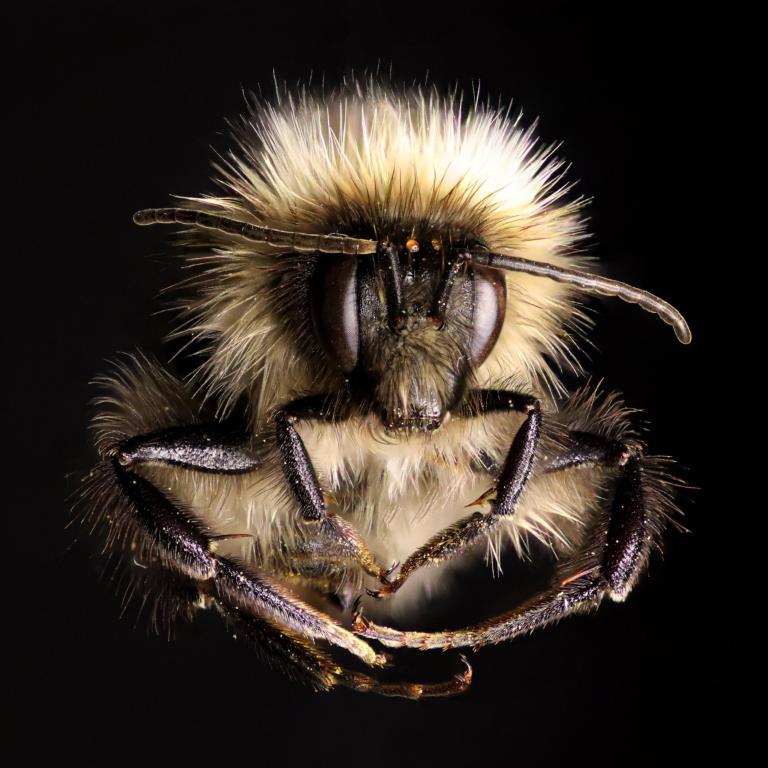
Under the project name SPRING: Strengthening Pollinator Recovery through Indicators and Monitoring, a group of research institutes are working together on a pan-European pollinator monitoring network. The aim is to systematically map insect populations on a large scale in order to provide the scientific basis needed to effectively protect pollinators in Europe. SPRING is the first step towards such an integrated European pollinator monitoring scheme.
European cooperation
In the Netherlands the research is led by Naturalis, with important roles for the Butterfly Foundation and EIS Knowledge Centre Insects. The Dutch organisation Observation International is also involved in the developments. To make the network a success, the institutes are asking for volunteers to help with field research.
Bees, hoverflies and butterflies are the most important pollinators. They are indispensable to our nature and food supply. Recent results of long-term studies are worrying: they show that insect populations in Europe have been seriously affected in recent decades. Alarming news, but a lot is still unclear. Add to this the fact that nature, and the effects of human activities, do not take notice of national borders, and it becomes clear that a coordinated, international approach is the only sustainable solution.
In 2018, the European Commission launched a broad initiative to halt the decline of pollinators: the EU Pollinators Initiative. In 2021, an international group of scientists presented the principles for an international monitoring network to the EU. It was named the European Pollinator Monitoring Scheme, or EU-PoMS.
The roleof Naturalis
The NL Biodiversity and Society research group at Naturalis, headed by Professor Koos Biesmeijer, plays a role in SPRING in several respects. Professor Biesmeijer was part of the international group of researchers that alerted the European Commission to the social importance of setting up a European monitoring network.
Within the SPRING project, Naturalis has the task of setting up a training programme for all participating European member states. In this way we build a network of taxonomic experts (experts who identify species), necessary to properly map the diversity of the 500 European butterfly species, 1000 hoverflies and 2000 wild bees.
To get a reliable picture of the spatial variation and fluctuations, many locations are needed - compare it to a network of weather stations. Across Europe, there will be 2000 measuring points. The scientists cannot do all this fieldwork alone; therefore they are looking for help from volunteers.
Top institutes from all over Europe are involved in the design of these courses. The training programme serves various knowledge levels, from entry level to expert. Volunteers are prepared so that they can 'adopt' a fieldwork site in the monitoring network. A new generation of taxonomic experts is given the opportunity to develop further in an international context. The educational programme will enable participating European countries to build taxonomic expertise efficiently and professionally.
Pollinator monitoring network in the Netherlands
Together with the Vlinderstichting and EIS, Naturalis is also building a Dutch monitoring network for pollinators. This is similar to the existing European network for butterfly counts. Each fieldwork site consists of an area of one square kilometre in which fixed walking routes are mapped out (transects). During the field season all bees, hoverflies and butterflies are counted every month along these transects. In addition, pan traps are used to collect insects in order to map populations and diversity at species level. The field locations are not all in nature reserves; research in agricultural areas is also very important to understand how pollinator populations are doing and what measures are needed.
Innovative techniques
Given the large number of field sites, identifying the collected insects is a major logistical operation, involving experts of various expertise. A large amount of data is collected and analysed centrally. The results are used to provide governments with scientifically based policy advice.
Innovative techniques will be used where possible. Artificial image recognition, for example, is used in the popular mobile app ObsIdentify. This way, you only have to take a photograph to discover what kind of animal or plant you are looking at. Other countries are eager to start using this too. The possibilities of using DNA techniques for identification are also being tested.
Citizen scientists in the field
As said, the scientists cannot do all this fieldwork alone. That is why they are looking for help from volunteers: people who want to 'adopt' a fieldwork spot. During the field season, from May to September, they will monthly observe and count pollinators in the field. Before they start, they follow a course in which they learn to recognise the pollinator groups and receive an explanation of the activities at the fieldwork site. Unique about this fieldwork is that, at the same time, dozens or even hundreds of researchers and volunteers all over Europe are doing the same, so that for the first time we have a total picture of pollinators on the whole continent!
A lookto the future
The SPRING project will run until autumn 2023 and is an important step towards providing a reliable picture of how pollinators are doing in Europe. Building upon the experiences gathered in SPRING, the European Union and individual Member States will continue and further expan the monitoring network. Only in this way will we gain insight into how and where pollinators need extra protection. This is not only vital for nature conservation, but also for our food safety.